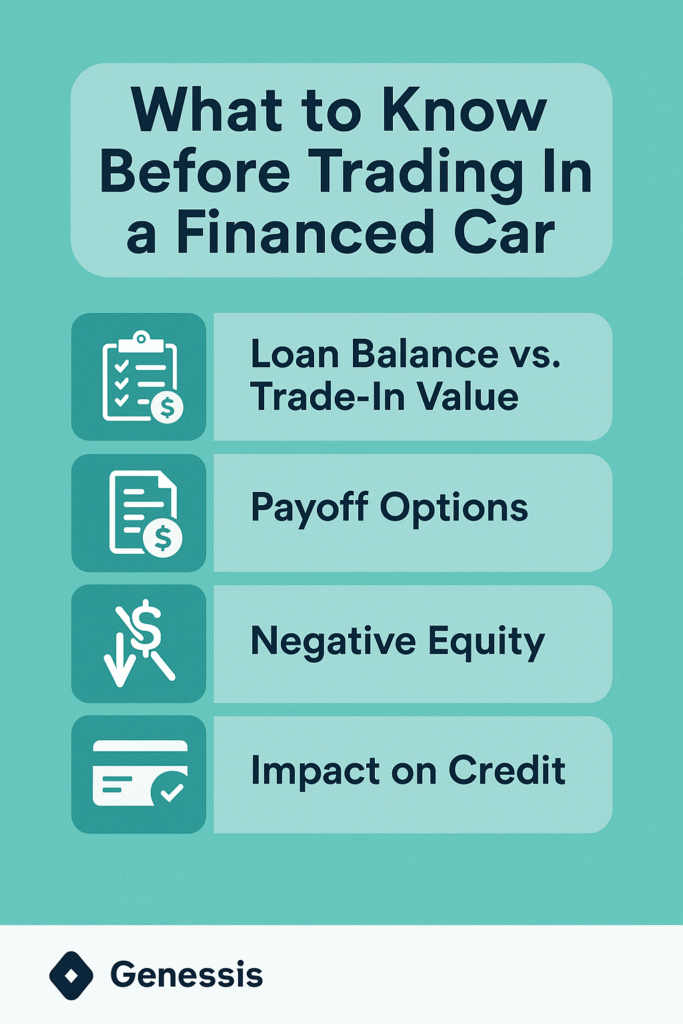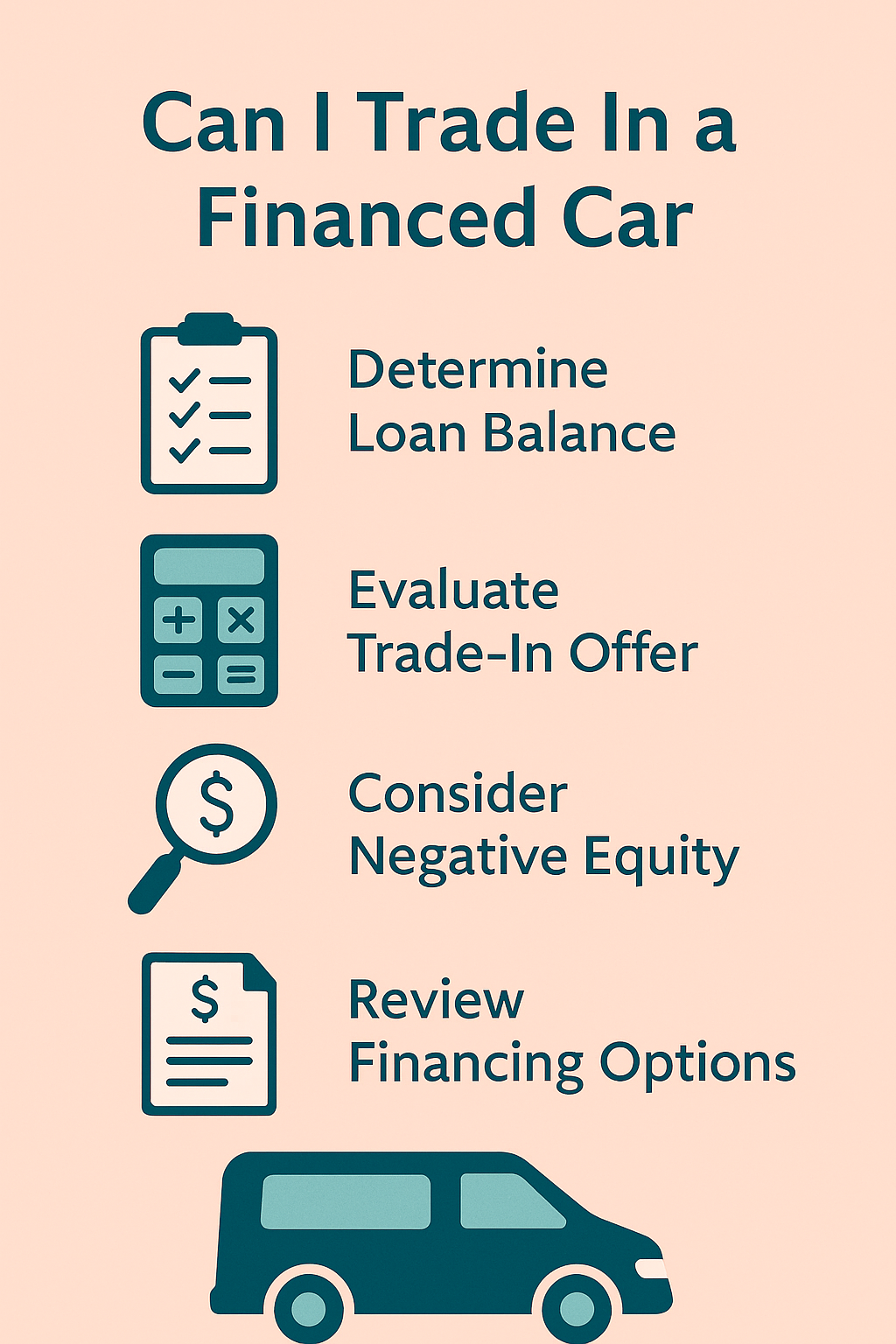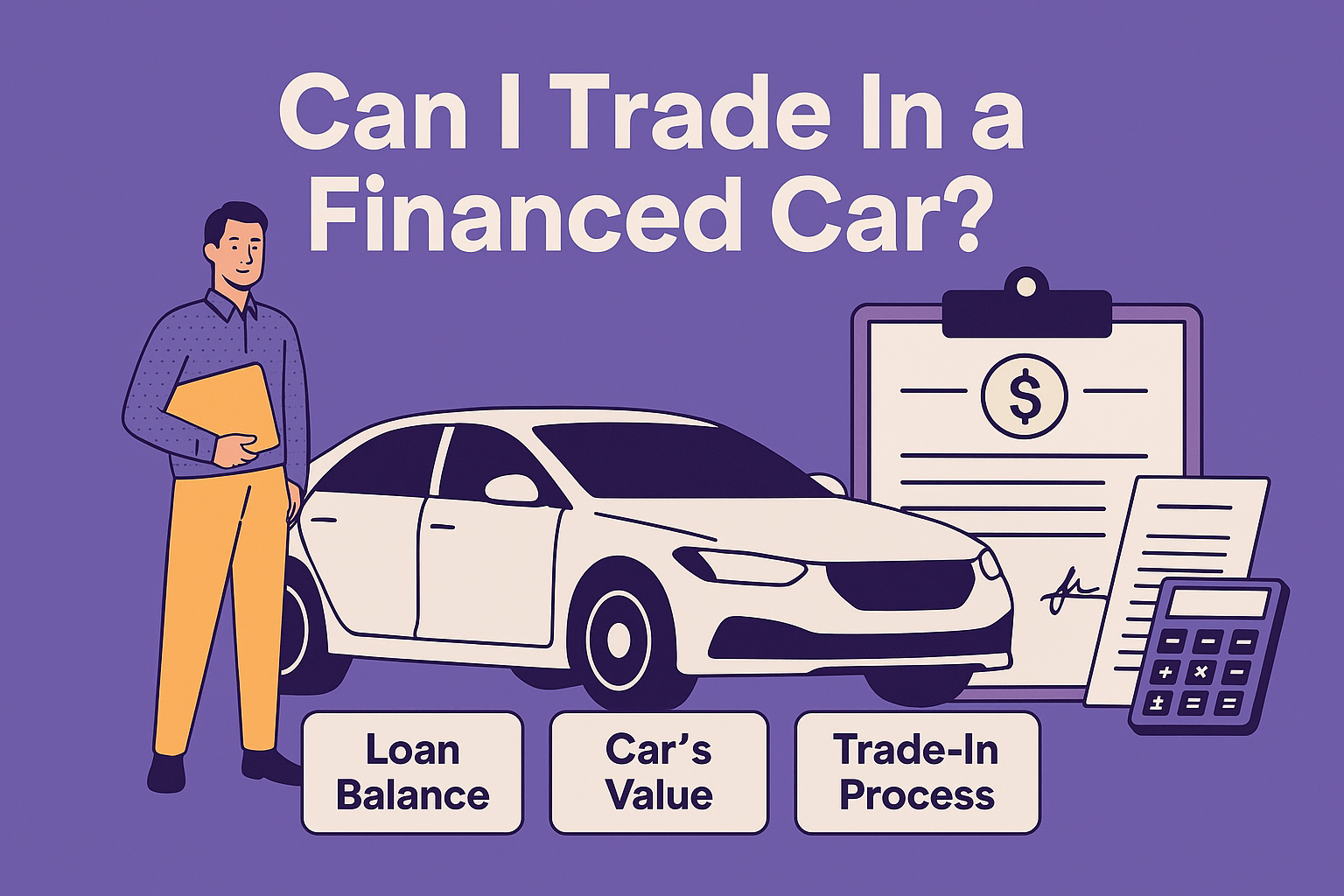Introduction
Wondering if Can I trade in a financed car? you’re still making payments on? You’re definitely not the only one.
Lots of drivers hit that point where their current ride just isn’t cutting it anymore—maybe it’s getting older, maybe your needs have changed, or maybe you’ve just got your eye on something new. But if you haven’t paid off your loan yet, you might be asking, “Can I even trade in a car I still owe money on?”
Good news: you can.
But—and it’s an important but—how smooth the process is depends on a few key things. You’ll need to consider your loan balance, what your car is currently worth, and whether you’ve got positive equity (where your car is worth more than what you owe) or negative equity (where you owe more than your car’s worth).
In this guide, we’re breaking it all down in plain English. You’ll learn exactly how trading in a financed car works in 2025, the potential pitfalls to avoid, and smart ways to save money along the way.
👉 Related Read: If you’re exploring other financing strategies, check out our guide on In House Financing for dealership-based funding options.
What Does It Mean to Trade In a Financed Car?
Trading in a car you’re still paying off basically means using it as a down payment on your next one.
Even if there’s still a loan on it, the dealership steps in, pays off what you owe, and if your car’s worth more than the loan balance, that extra value—called equity—gets put toward your new ride. Simple as that.
According to Kelley Blue Book, this is a common practice and one of the easiest ways to get out of your current car loan.
Positive Equity vs. Negative Equity
Positive Equity
- Loan balance: $10,000
- Trade-in value: $13,000
- Equity: $3,000
That $3,000? It goes straight toward your next car as a down payment. Easy win.
Negative Equity
- Loan balance: $15,000
- Trade-in value: $12,000
- Negative equity: -$3,000
That $3,000? It goes straight toward your next car as a down payment. Easy win.
Can I Trade In a Financed Car With Negative Equity?
Yes, but it’s not always the smartest choice. You can either:
Pay Off the Difference – Cover the remaining balance before trading in.
Roll Over the Balance – Add the negative equity into your new loan (but this increases debt).
Can I Trade In a Financed Car With Negative Equity?
Yes, but it’s not always the smartest choice. You can either:
Pay Off the Difference – Cover the remaining balance before trading in.
Roll Over the Balance – Add the negative equity into your new loan (but this increases debt).

Steps to Trade In a Financed Car
1. Check Your Loan Payoff Amount
Start by finding out exactly how much you still owe. You can call your lender or just log into your loan account online—most have this info right on the dashboard.
2. Figure Out Your Car’s Trade-In Value
Use tools like Kelley Blue Book or Edmunds to get an estimate. Be honest about your car’s condition for the most accurate number.
3. Do the Math on Your Equity
Take your car’s estimated trade-in value and subtract what you still owe on the loan.
- If the number’s positive—you’ve got equity.
- If it’s negative—you’ll need a plan to deal with it.
4. Get Quotes from Multiple Dealers
Don’t settle for the first offer. Different dealerships might give you different trade-in values, so it’s worth shopping around.
5. Have a Plan for Negative Equity (if needed)
If you’re upside down on the loan, you’ve got two options:
- Pay the difference out of pocket.
- Roll it into your next loan (just know it’ll raise your monthly payment).
6. Close the Deal
Once you’re ready, the dealer handles the paperwork. They’ll pay off your current loan and apply any positive equity to your next car. All that’s left is to drive off in your new ride!
Why Trading In a Financed Car Can Be a Smart Move
- Easy vehicle upgrade
You can swap out your current car without waiting to finish the loan—perfect if your needs have changed or you’re just ready for something new. - Dealer handles the paperwork
No hassle. They’ll take care of paying off your loan and all the DMV stuff. - Positive equity helps reduce your next loan
If your car’s worth more than what you owe, that extra value goes straight toward your next car—meaning a smaller loan and possibly lower monthly payments.
Potential Drawbacks to Watch Out For
You could end up with negative equity
If you owe more than your car’s worth, you’ll have to cover the difference—or roll it into your next loan, which can get expensive.Dealers usually pay less than private buyers
It’s faster and more convenient, sure, but you might leave some money on the table compared to selling the car yourself.Rolling over debt increases what you owe
Adding old loan balances to a new one can stretch out your payments and increase interest costs over time.
Tips to Get the Best Value When Trading In a Financed Car
Know Your Car’s Value
Don’t guess—check it. Use a few different appraisal sites like Kelley Blue Book, Edmunds, and Carvana to get a real sense of what your car’s worth in today’s market.
Shop Around
That first trade-in offer might be tempting, but don’t jump on it. Get quotes from multiple dealerships. A little legwork can mean a lot more cash in your pocket.

Tiny upgrades can go a long way. Think new tires, touch-up paint, or a professional detail. A cleaner, well-maintained car just looks more valuable—and dealers notice.

Got a little wiggle room in your budget? Paying down your loan before trading in can cut down negative equity and give you a stronger negotiating position.

FAQs About Trading In a Financed Car
Q1: Can I trade in a car I’m still making payments on?
Absolutely. It’s pretty common. The dealer will pay off the remaining balance on your loan as part of the trade-in process.
Q2: Do I need good credit to trade in a financed car?
Not necessarily. You can trade it in with less-than-perfect credit, but keep in mind—your credit score will affect the interest rate and terms of your next loan.
Q3: What if I owe more than my car is worth?
That’s called negative equity. You’ll either need to pay the difference out of pocket or roll it into your new loan (which could mean higher monthly payments).
Q4: Is it better to pay off my car before trading it in?
If you can, yes. Paying it off first helps you avoid negative equity and gives you more flexibility during the trade.
Q5: Can I refinance instead of trading in?
Yes! Refinancing might lower your monthly payments, making it easier to manage your loan—or hold off on a trade until you’re in a better equity position.
Conclusion
So, can you trade in a financed car? The answer is yes—but the decision depends on your equity, loan balance, and financial goals. Trading in can be a smart move if you have positive equity.
but it can also increase debt if you’re rolling over negative equity. By understanding your options, using online appraisal tools, and comparing offers, you can make the best decision for your situation.


Leave a Reply